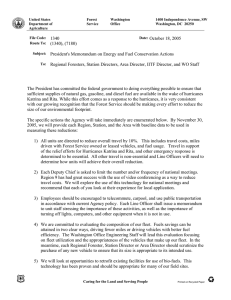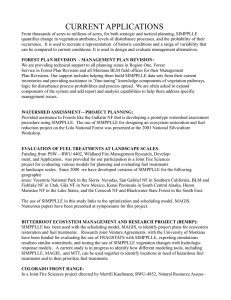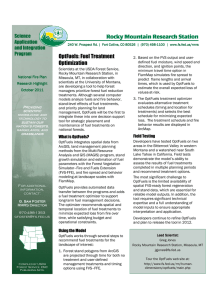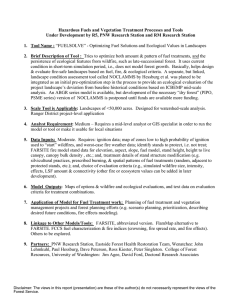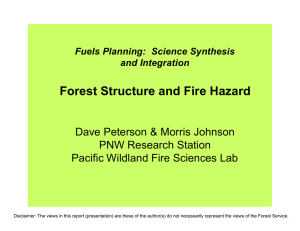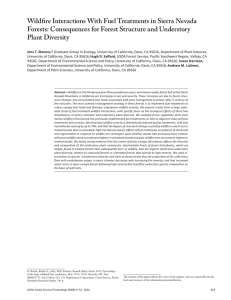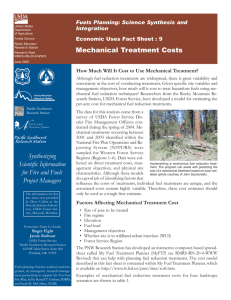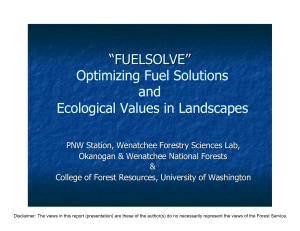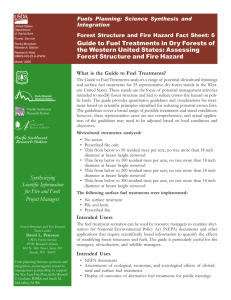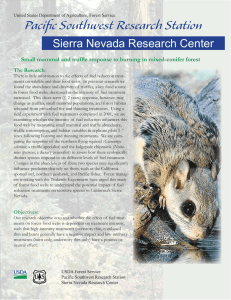Hazardous Fuels and Vegetation Treatment Processes and Tools
advertisement
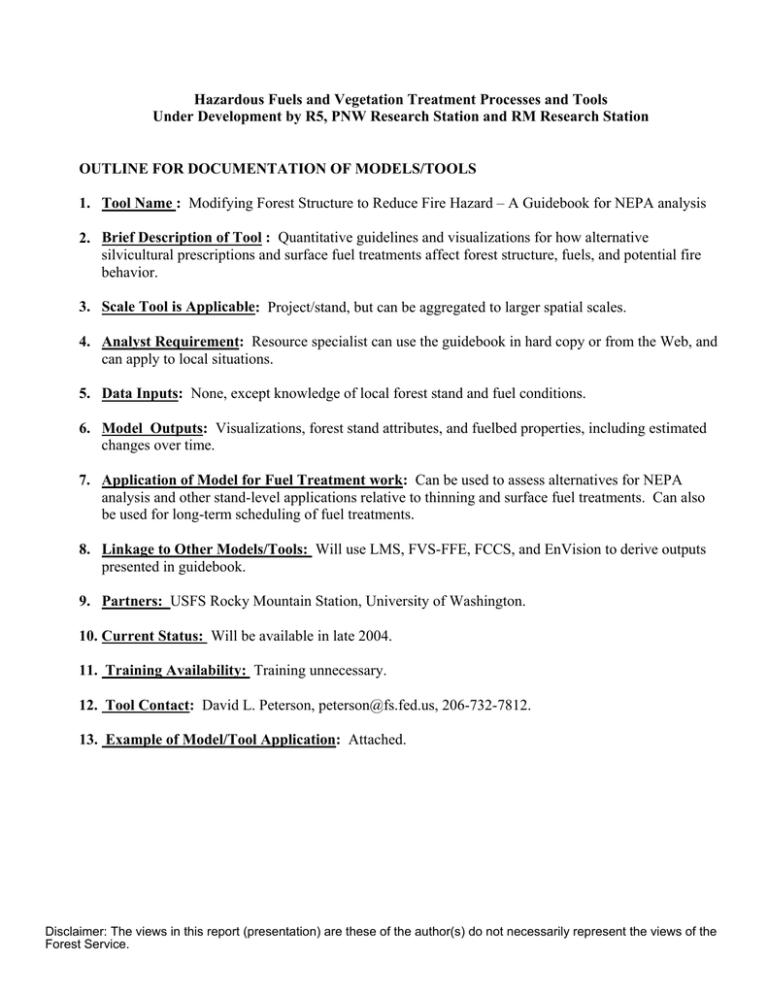
Hazardous Fuels and Vegetation Treatment Processes and Tools Under Development by R5, PNW Research Station and RM Research Station OUTLINE FOR DOCUMENTATION OF MODELS/TOOLS 1. Tool Name : Modifying Forest Structure to Reduce Fire Hazard – A Guidebook for NEPA analysis 2. Brief Description of Tool : Quantitative guidelines and visualizations for how alternative silvicultural prescriptions and surface fuel treatments affect forest structure, fuels, and potential fire behavior. 3. Scale Tool is Applicable: Project/stand, but can be aggregated to larger spatial scales. 4. Analyst Requirement: Resource specialist can use the guidebook in hard copy or from the Web, and can apply to local situations. 5. Data Inputs: None, except knowledge of local forest stand and fuel conditions. 6. Model Outputs: Visualizations, forest stand attributes, and fuelbed properties, including estimated changes over time. 7. Application of Model for Fuel Treatment work: Can be used to assess alternatives for NEPA analysis and other stand-level applications relative to thinning and surface fuel treatments. Can also be used for long-term scheduling of fuel treatments. 8. Linkage to Other Models/Tools: Will use LMS, FVS-FFE, FCCS, and EnVision to derive outputs presented in guidebook. 9. Partners: USFS Rocky Mountain Station, University of Washington. 10. Current Status: Will be available in late 2004. 11. Training Availability: Training unnecessary. 12. Tool Contact: David L. Peterson, peterson@fs.fed.us, 206-732-7812. 13. Example of Model/Tool Application: Attached. Disclaimer: The views in this report (presentation) are these of the author(s) do not necessarily represent the views of the Forest Service. Thin from below < 9 inches DBH Thin to target stand density proportionally Thin from below to target stand density Thin from below to fire resilient conditions Disclaimer: The views in this report (presentation) are these of the author(s) do not necessarily represent the views of the Forest Service.
